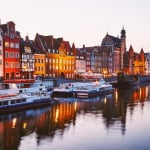Name: Tana no Kuba-yama
Address: Tana, Iheya Village, Shimajiri District, Okinawa, Japan
Official Website:http://www.iheyazima-kankou.jp/play/iheya/
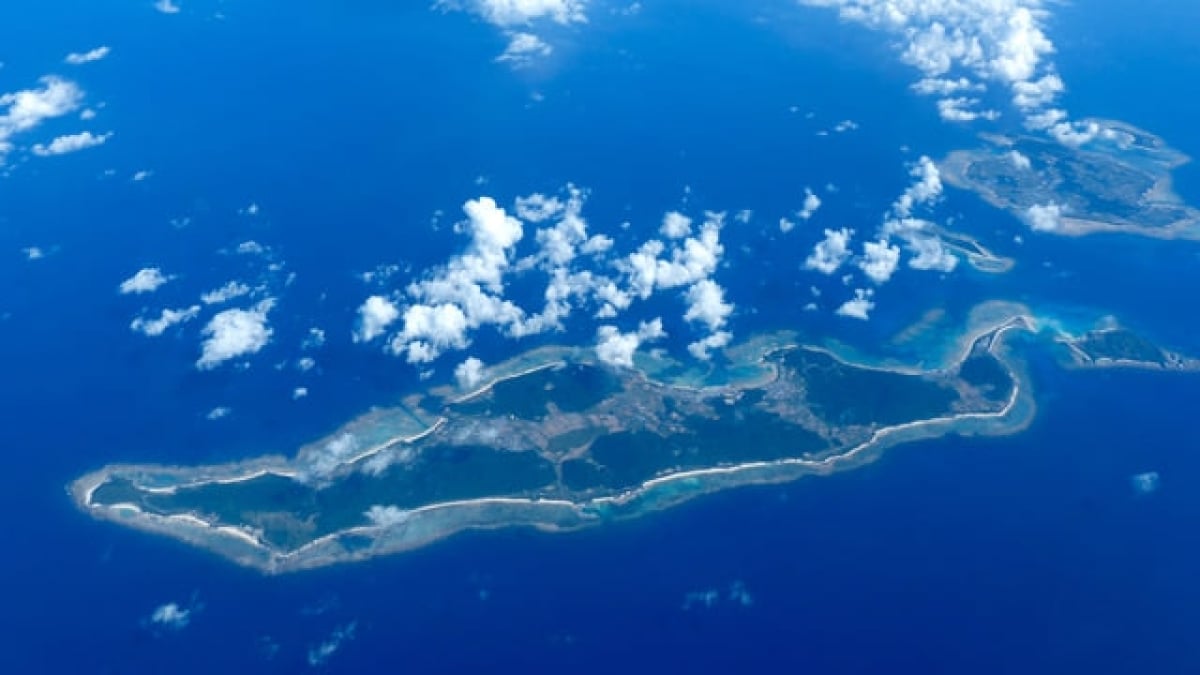
Explore the Northernmost Remote Island of Okinawa! 10 Must-Visit Attractions in Iheya Island
Located about a two-hour ferry ride from Unten Port in northern Okinawa, Iheya Island is the northernmost inhabited island in Okinawa Prefecture. This hidden paradise is characterized by a series of small mountains reaching around 200 meters in height, forming a long and narrow island shape. Known as one of Okinawa’s lesser-known diving spots, Iheya Island offers pristine blue skies, crystal-clear waters, and untouched nature, making it a serene getaway far from crowded tourist areas.
Since there is no airport on the island, the number of visitors remains relatively low, allowing for a peaceful retreat surrounded by breathtaking landscapes. The island is home to traditional Ryukyuan-style houses, offering a glimpse into Okinawa’s rich cultural heritage. Here, you won’t find noisy city life—only tranquil coastal views and an authentic island experience.
If you’re planning a trip to Iheya Island, don’t miss these 10 must-visit tourist attractions that showcase the island’s natural beauty and cultural significance!
table of contents
[x] close
Explore the Northernmost Remote Island of Okinawa! 10 Must-Visit Attractions in Iheya Island
1. Tana no Kuba-yama
At the northernmost tip of Okinawa's remote Iheya Island, you'll find Tana no Kuba-yama (久葉山), a breathtaking natural wonder officially designated as a Prefectural Natural Monument in 1958. This lush, green paradise is home to Kuba trees (Livistona chinensis), a species of evergreen fan palm that grows densely across the mountain. While many associate Okinawa with sugarcane or coconut palms, Kuba trees have played a vital role in local life for centuries. Their dried leaves were traditionally used for roofing, boat sails, and even as handmade fans.
The sight of these towering fan palms covering the mountain from the shoreline to the peak is nothing short of spectacular. Beyond its natural beauty, Kuba trees are considered sacred, believed to house divine spirits. This makes Kuba-yama a mystical sanctuary—a place where gods are said to rest their wings. At the summit, a white lighthouse stands in contrast to the deep green landscape, adding a stunning visual accent to the scenery. For travelers seeking an untouched Okinawan wilderness, this is the perfect destination.
2. Torazu Iwa
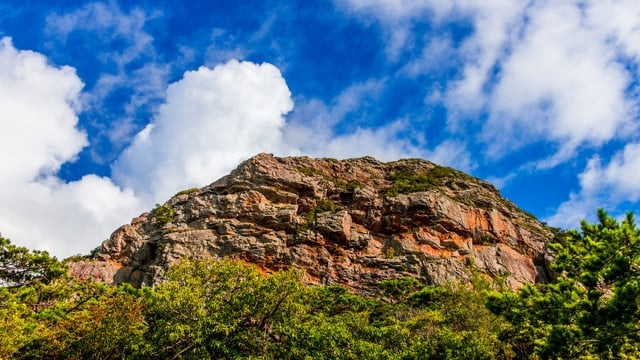
Before setting foot on Iheya Island, travelers arriving by ferry from Unten Port on the Motobu Peninsula will first encounter the majestic Torazu Iwa (虎頭岩)—the “Tiger Head Rock.” Towering behind Maedomari Port, this colossal rock formation, sculpted over time by wind and waves, resembles a crouching tiger watching over the island. Many locals believe this sacred rock embodies a divine guardian, protecting those who come and go.
A stairway leads up the rock, offering a panoramic view of Iheya Island from its summit. The island is famous for its crystal-clear coral seas and untouched greenery, and the best way to admire these natural wonders is from the back of the tiger itself. After enjoying the breathtaking scenery, visitors can descend the stairs and explore the forest park at the base of the rock—perfect for hiking and leisurely walks.
Name: Torazu Iwa (Tiger Head Rock)
Address: Gakiya, Iheya Village, Shimajiri District, Okinawa, Japan
Official Website:https://www.okinawastory.jp/spot/600010591
3. Kumaya Cave
One of the most fascinating attractions on Iheya Island is Kumaya Cave. This natural formation was created over 280 million years ago, as wind, waves, and rain gradually eroded the rocks to form this breathtaking cave. With an entrance standing 5 meters high and an interior spanning 600 tsubo (approximately 2,000 square meters), visitors must pass through a narrow rock passage to reach the main cavern. The thrill of the journey and the sense of openness upon arrival make it an unforgettable experience. The cave remains dark at all times, exuding a mysterious and mystical ambiance. Even in the scorching summer, the cave stays refreshingly cool, allowing visitors to spend hours exploring comfortably.
However, Kumaya Cave is more than just a natural wonder. The name "Kumaya" means "to hide," and the cave holds deep historical and mythological significance. The Edo-period scholar Sadataka Fujii proposed that this could be the actual location of the "Amano Iwato" (Heavenly Rock Cave) from Japanese mythology, where Amaterasu, the Sun Goddess, once hid. This theory sparked a major debate with the renowned scholar Motoori Norinaga, and to this day, researchers from across Japan visit the site for further study. A remote island in Okinawa connected to the creation myths of Japan—Kumaya Cave is a place where history, nature, and legend intertwine, making it an extraordinary destination for travelers.
Address: Tana, Iheya Village, Shimajiri District, Okinawa Prefecture
Official Website: http://www.iheyazima-kankou.jp/play/iheya/
4. Nentou Hiramatsu
Nentou Hiramatsu (Nentō Hiramatsu) is a legendary pine tree that stands alongside Kume Island's "Goeda no Matsu" as one of Okinawa’s two most famous pines. This massive tree belongs to the Ryukyu pine species, which typically grows vertically. However, Nentou Hiramatsu has expanded horizontally like a giant umbrella, creating a stunning natural spectacle. Estimated to be between 200 to 300 years old, the tree stands 8 meters tall with an incredible 25-meter-wide canopy. In 2016, it was designated as a National Natural Monument, further solidifying its cultural and ecological importance.
Recognized as one of Japan’s "100 Remarkable Trees," Nentou Hiramatsu is surrounded by a well-maintained park, making it an excellent stop for nature lovers. According to legend, the tree we see today is actually the second generation of Nentou Hiramatsu. Long ago, there was a magnificent pine tree called "Aniki Matsu" (Brother Pine) in the same location. However, a man named Santachiku from Izena Island cut it down, and as a result, he fell ill and died, believed to be cursed by the tree's spirit. His younger brother and relatives planted a new pine in atonement, which grew into the grand Nentou Hiramatsu we see today.
As a symbol of Iheya Island’s natural heritage, this majestic pine is a must-visit landmark for those exploring the region.
Address: Tana, Iheya Village, Shimajiri District, Okinawa Prefecture
Official Website: http://www.iheyazima-kankou.jp/play/iheya/
5. Yagura Tomb
Nestled along the rugged southwestern coastline of Iheya Island, the Yagura Tomb (屋蔵墓) is a fascinating historical site with mysterious origins. Though its construction remains unclear, the tomb houses a stone monument dedicated to Yagura Ufunushi (屋蔵大主), the founding ancestor of the First Shō Dynasty of the Ryukyu Kingdom. Adjacent to the incense burner inscribed with "First Shō Dynasty" stands the black granite mausoleum of Yagura Ufunushi.
According to legend, Yagura Ufunushi lived around 600 years ago in the Uezato area of Wakiyashiku, a village located about 1 km from the tomb. In 1935, his descendants visited the site and conducted a survey, uncovering six stone funerary urns. Among them, one was made of Nanban-yaki, a type of ceramic ware, suggesting that it contained the remains of Yagura Ufunushi himself.
This natural cave-turned-burial site offers a glimpse into Okinawa’s ancient history and the legacy of the Ryukyu Kingdom. If you’re exploring Iheya Island, Okinawa’s northernmost island, don’t miss the opportunity to step into this historical landmark and connect with the region’s rich past.
Address: Yagura Tomb, Wakiyashiku, Iheya Village, Shimajiri District, Okinawa Prefecture
Official Website:https://www.ytabi.jp/spot/detail.jsp?id__=119
6. Noho Island
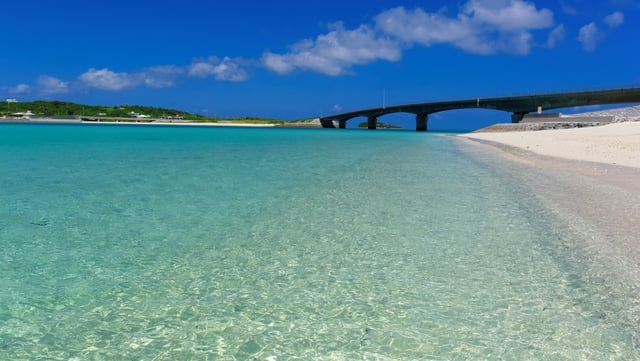
With a population of only around 100 people, Noho Island (野甫島) is a tranquil, remote island connected to Iheya Island via the stunning 600-meter Noho Bridge. From the bridge, visitors can enjoy breathtaking views of crystal-clear waters and coral reefs, while the island’s pristine white sandy beaches provide the perfect setting for relaxation.
Despite its modest elevation of only 40 meters, Noho Island’s flat landscapes, surrounded by open fields and sandy shores, create a secluded, tropical escape. It feels like a hidden paradise, where you can experience the simple beauty of nature and slow down from the busy world.
The island is home to sprawling sugarcane and sweet potato farms, adding to its peaceful, rural charm. There is only one small cooperative store, operated by the locals, which has become a beloved stop for visitors looking for a taste of the island’s simple lifestyle.
Noho Island’s sea salt has become a popular souvenir. One of the finest products is Shiomu Sumi, a 100% natural salt extracted from seawater using a unique process. The seawater is sprayed over Japanese cypress wood, compressed with wind power, and carefully hand-processed to preserve its rich minerals. This chemical-free “Salt of Happiness” is not only a healthy seasoning but also a meaningful gift from the island. The residual liquid from the salt-making process is also used to create "Umi no Sachi" (Blessings of the Sea), a mineral-rich nigari extract that enhances the flavor of drinking water.
If you’re looking for a peaceful getaway off the beaten path, Noho Island offers an authentic, unspoiled island experience that’s perfect for nature lovers and adventure seekers alike.
Address: Noho Island, Iheya Village, Shimajiri District, Okinawa Prefecture
Official Website:http://www.okinawainfo.net/iheya/noho.htm
7. Yonasaki Beach
Yonasaki Beach, located at the foot of Nofu Ohashi Bridge on the Iheya Island side, is a breathtaking white sand beach renowned for its unparalleled beauty in Okinawa. Often considered one of the most stunning beaches in the region, it is a must-visit destination for travelers exploring Iheya Island. The crystal-clear waters create a mesmerizing gradient of emerald green to deep blue, offering a picturesque view of the horizon. This scenic spot is perfect for couples and families looking to create unforgettable seaside memories.
The pristine waters of Iheya Island boast high transparency, making it an excellent spot for scuba diving. Visitors can swim in the refreshing ocean and later relax at the nearby camping area, where the shade of the Casuarina trees provides a cool retreat. Whether taking a dip after exploring the island, strolling along the beach at sunset, or simply basking in the serene ambiance, Yonasaki Beach is the ultimate adventure and relaxation spot in Iheya. Depending on the time of day, visitors may find themselves alone on this secluded beach, making it a rare opportunity to enjoy the untouched beauty of Okinawa’s remote islands.
Address: Yonasaki Beach, Shimajiri, Iheya Village, Shimajiri District, Okinawa Prefecture
Official Website:http://www.iheyazima-kankou.jp/play/iheya/
8. Iheya Village Historical & Folklore Museum
Located near Maedomari Port, the gateway to Iheya Island, the Iheya Village Historical & Folklore Museum is a fascinating attraction showcasing the island’s cultural heritage. The museum houses an extensive collection of artifacts, tools, and exhibits related to the agricultural and fishing traditions, annual festivals, and everyday life of the locals. It provides an in-depth look into the unique history and folklore of Iheya Island, making it a must-visit for history enthusiasts.
At the entrance stands a statue of Fujii Sadamiki, a renowned scholar who suggested that Emperor Jimmu may have originated from "Eheyajima" (Iheya Island). Inside the museum, visitors can also see a reproduction of his book "Shoguchi-hatsu," which theorizes that Kumaya Cave on the island is linked to Japan’s Ama-no-Iwato legend. If you plan to visit Kumaya Cave, stopping by this museum beforehand will enhance your understanding of its historical significance.
As the ancestral homeland of the first Sho Dynasty, which established the Ryukyu Kingdom, Iheya Island holds a significant place in Okinawa’s royal history. The museum features various artifacts related to the Ryukyu Kingdom, making it the perfect starting point for learning about Iheya’s past before exploring the rest of the island.
Address: 217-27 Gakiya, Iheya Village, Shimajiri District, Okinawa Prefecture
Official Website:https://bit.ly/2yasFKS
9. Suhagama Beach
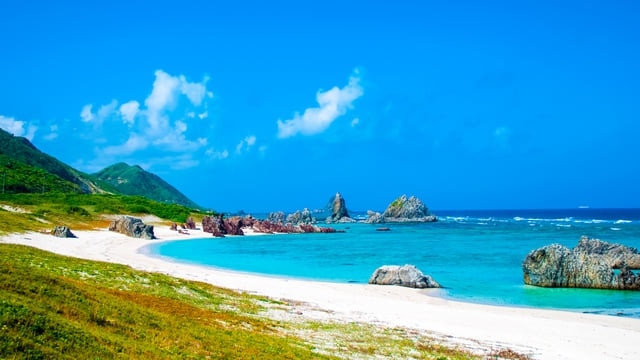
Nestled at the foot of Kuba Mountain, Suhagama Beach is one of Iheya Island's most stunning sandy shores, alongside Yonesaki Beach. Unlike Yonesaki Beach, which faces east, Suhagama Beach faces west, making it the perfect spot to watch a breathtaking sunset. The coastline features unique rock formations, offering not only scenic beauty but also a rugged, picturesque landscape to admire.
Historically, this beach was a popular romantic getaway for locals, but it's also great for solo travelers or groups. Nearby, you’ll find sites rich in folklore, such as Yahee Rock and Nzo Miji (Muzou Water), which are worth exploring. Take your time to discover these hidden cultural gems!
Name: Kaisanbutsu Ryouri Kaikyo
Address: 297-30 Gakiya, Iheya Village, Shimajiri District, Okinawa, Japan
Official Website:http://tabelog.com/okinawa/A4702/A470205/47001841/
10. Kami Ashagi (Sacred Ritual Halls of Iheya Island)
In Ryukyu culture, an "Ashagi" (also known as "Ashage") is a sacred site where priestesses, called Noro, invoke deities during religious ceremonies. On Iheya Island, two traditional Kami Ashagi remain, located in Gakiya and Shimajiri, dating back to the Ryukyu Kingdom era.
These structures are characterized by their short pillars and thatched roofs and are still used today for traditional festivals and rituals. The surrounding area, known as "Ashibina" (遊び庭), serves as an open space where Kami Ashibi (sacred dance performances) take place in dedication to the gods.
While not developed as a typical tourist attraction, the Kami Ashagi are culturally significant landmarks that provide a glimpse into the island’s spiritual heritage. If you're interested in Okinawa’s indigenous traditions, visiting these sites is a must!
Name: Kami Ashagi
Address: Gakiya, Iheya Village, Shimajiri District, Okinawa, Japan
Official Website:http://www.iheyazima-kankou.jp/play/iheya/
◎ Conclusion
This concludes our list of 10 must-visit attractions in Iheya Island. One of the island’s most unique events is the Moonlight Marathon, held annually in autumn. In recent years, this event has attracted more visitors, gradually increasing Iheya’s reputation as a hidden gem of Okinawa.
If you’re looking for a secluded island adventure in Japan’s northernmost Okinawan paradise, now is the perfect time to visit!
RELATED ARTICLES
REGIONS
CATEGORIES
FEATURED ON Okinawa
-
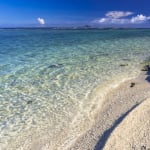
Sesoko Beach Has the Clearest Waters on Okinawa’s Main Island! Enjoy Swimming and Scenic Views
-
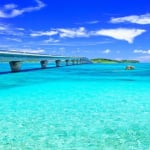
Extend Your Trip from Miyako Island to Remote Islands! How to Access 5 Nearby Islands
-

A Must-See for Sake Lovers! 6 Local Awamori from Miyako Island You’ll Want to Try
-

[Miyako Island] Kurima Bridge Sightseeing Guide|The Bridge Connecting the Main Island and Kurima Island
-
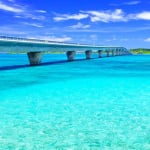
[Miyako Island] Ikema Bridge Sightseeing Guide ◎ Cross a Sea of Blue and Green!?
MOST POPULAR ON Okinawa
-
 1
1Doha: Must-see Attractions in the Capital of Qatar
-
 2
2Toronto: 10 Things to do in this Picturesque Canadian City
-
 3
3Amarillo: A City Famous for It’s Amazing Canyons, Great History and Music
-
 4
4South Korea: Dazzling Scenery, Rich Culture and Fascinating History
-
 5
5Kuwait: A Country in Middle East Asia Famous for Hot Sand Dunes and Stunning Cityscape

